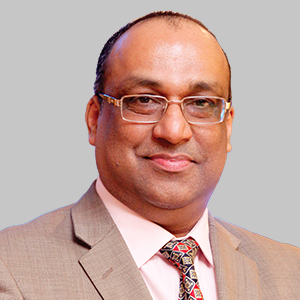Industry
Pre-budget recommendations 2023-24

Medical Buyer brings exclusive insights from industry stalwarts on their recommendations for the Budget and expectations from the year ahead.
The Union Budget 2023-24 is scheduled to be presented on February 1, 2023, during the first half of the Parliament’s budget session, which usually begins in the last week of January every year.
This will be the fifth budget of the Narendra Modi 2.0 government and Finance Minister, Nirmala Sitharaman, and the last full budget before the general elections due in April-May 2024.
India’s healthcare system has unavoidably been shaken by the Covid-19 pandemic, which has tested even the most sophisticated healthcare systems in the world. It is anticipated that the Center will direct more capital investments in primary health centers, district hospitals, wellness centers, and national ambulance infrastructure. Steps will also likely be announced to bridge the shortfall in the healthcare workforce.
The Union Budget 2023-24 is expected to put the economy on an accelerated growth path after the impact caused by the pandemic. Amendments to the tax code to promote sustainable growth, infrastructure investment, a focus on R&D spending, nurturing incentives to the core sectors, including manufacturing and services, and leveraging the vast experience of running captive centers are among the top priorities on the government’s agenda as preparations for the budget are underway. Ease of tax compliance, simplification, and digitization are the cornerstones to enhancing the ease of doing business in India.
Medical Buyer brings exclusive insights from industry stalwarts on their recommendations for the Budget and expectations from the year ahead.
Association of Indian Medical Device Industry (AiMeD)
“The medical devices imports continued to grow at an alarming level in FY22. India imported medical devices worth ₹63,200 crore in 2021-22, up 41 percent from ₹44,708 crore in 2020-21, as per data from the Union Ministry of Commerce and Industry.
China remained the top import source for India, as medical device imports from China grew 48 percent from ₹9112 crore in 2020-21 to ₹13,538 crore in 2021-22. Imports from the US also increased steeply by 48 percent to ₹10,245 crore in 2021-22 from ₹6919 crore in 2020-21. The value of medical devices from China was nearly the same as the combined value of imports from Germany, Singapore, and the Netherlands in 2021-22.
It has led to domestic industry players shutting shop as the local industry is not able to compete with cheaper Chinese imports. This is a lost opportunity for Indian manufacturers to grow and compete globally, but saw with dismay dumping of Chinese imports when duties were slashed to zero percent.
Sadly, with over two years of PM Narendra Modi’s call for self-reliance Atmanirbhar Bharat, India’s trade deficit with China is on high rise. The overall trade deficit with China widened to a record USD 72.9 billion in 2021-22.
If the government implements even 70 percent of the recommendations recently made by the Parliamentary Committee on Health, we can see a reversal on the import dependence and growth of the domestic industry, which will bring in affordable wider access to medical devices, leading to better healthcare delivery. We are very optimistic and hope that we can realize our vision to be among the top five manufacturing hubs in the world for medical devices.
AiMeD has the following Budget recommendations to end the 80–85 percent import dependence forced upon India and an ever-increasing import bill of over ₹63,200 crore:
- We are more than hopeful and positive that the government will act upon the request of the Indian medical device industry for a separate department of medical devices. This key strategic need has also been recommended by the Parliamentary Committee on Health.
- AiMeD urges the government to consider shifting from an 8-digit HS code to a 10-digit HS code, as done by USA and Europe, to give more granular data for enabling better analysis and policy making.
- As done for mobile phones, the government should protect the manufacturing base in India by increasing the basic custom duty on import of medical devices to at least 10 to 15 percent from the current 0–7.5 percent though WTO bound rate is mostly 40 percent. Due to such low custom duty, India is importing ₹63,200 crore of medical devices and is over 80 percent import dependent. This 80 percent can be reduced to below 30 percent with correct policies, as done for mobile phones and consumer electronics.
- Instead of 18 percent GST applicable on some medical devices that are not luxury goods, the GST needs to be a flat 12 percent for all medical devices. Also reducing GST to 5 percent is making Indian products non-competitive to imports as then manufacturers are unable to keep reduced ex-factory prices, based on lower input costs net of GST.
- Trade margin monitoring. The purpose of low duty was to help consumers get affordable access to devices. This objective is not realized if consumers will be charged a high MRP of 10 to 20 times import landed price. Customs recording of MRP on bill of entry will assist to bring in data generation for policy making by evidence of a trade margin rationalization policy for the manufacturer/importer so that there is a capping of maximum four times on the ex-factory price and on import landed price of Indian distributor (at first point of sale, viz., when GST/import duty is first levied on entering into the market).
The Indian medical devices industry has the potential to reach USD 50 billion by 2030. We request kind consideration of the Government of India for encouraging domestic manufacturing to be sustainable in the long term for becoming Atmanirbhar and to address the national healthcare security needs exposed at the onset of Covid and for ease of doing business.
We still believe PM Narendra Modi’s call for self-reliance and an Atmanirbhar Bharat will not only see India emerging as a manufacturing superpower but will also strengthen India to vie for being the second factory in the world for medical devices and a dependable manufacturer of quality products in the global supply chain. We have shown the ability and capability of Indian entrepreneurs during Covid to Make in India when we have the support of the government.”
Medical Technology Association of India (MTaI)
India currently has sufficient manufacturing capacity for low-cost low-risk devices such as surgical gloves, blood bags, extension lines, stop cocks, some IV access products and some other consumables. It is the right time to strengthen ‘brand India’ and get wider awareness of India-made medical devices in overseas markets which will further the government’s vision of ‘Make in India for the world’. MTaI has requested in its pre-budget recommendation for the allocation of a separate budget of upto 5 Million USD for the promotion, advertising and marketing of the Indian medical device industry globally.

Pavan Choudary
Chairman,
Medical Technology Association of India
“The government should rationalize the duty structure by reducing high Customs duty to 2.5% on medical devices and removing health cess ad valorem in Union Budget 23-24 to ensure patient affordability and easy access to quality medical devices. High customs duties have adversely impacted the costs of the medical devices and equipment in India which contradicts the government’s efforts to provide low-cost healthcare available to masses through programs like AB-PMJAY. This is particularly concerning since more than 80% of medical devices are imported into India to meet the demand for quality critical care. The high tariff structure also increases the risk of smuggling of high-value low-bulk medical devices from neighboring countries such as Nepal, Bangladesh, Sri Lanka and Bhutan where duties are significantly lower.”
NATHEALTH
In its submission to the finance ministry, NATHEALTH has sought rationalization of GST and enhanced insurance coverage, especially in smaller cities and towns in the upcoming Budget.
In its submission to the finance ministry, the industry body has noted that unlike other sectors, the healthcare sector has not been able to derive the benefits of the GST transition.
In fact, the embedded taxes in the healthcare sector have increased in the post-GST regime, compared to pre-GST period, it stated.
The industry body has proposed imposition of 5 percent merit rate on the output healthcare services for all healthcare establishments (both private and government) with the option to claim full input tax credits.
The other option can be levying 5 percent GST rate on output services for all private hospitals, and an optional dual-rate structure for government healthcare establishments, it added.
Presently, GST is exempt on the healthcare services. NATHEALTH recommends imposition of 5 merit rate on these services as this would allow healthcare service providers to claim input tax credit, thereby lowering their embedded tax burden.
NATHEALTH sought clearance of working capital arrears both for providers and procurement organizations.

Shravan Subramanyam
President,
NATHEALTH
“It is imperative to build infrastructural capabilities so that people have greater access to quality and critical healthcare services. Viability gap funding by the government is essential to set up hospitals in Tier-I and Tier-II cities, encouraging increased investment in the healthcare infrastructure. Uniform adoption of Ayushman Bharat Digital Mission is another imperative, which calls for clearly defined delivery models for innovative modules developed by private players. If all payment backlogs, both for providers and suppliers, under insurance and public procurement are cleared, it would significantly improve the availability of healthcare infrastructure.”
NATHEALTH has also sought an increase in budgetary allocation for the health sector.
Apollo Hospitals
Apollo Hospitals has submitted its recommendations and requests for representation to the Ministry of Finance for their consideration while drafting the upcoming Annual Budget for financial year 2023-24. The submission has been classified into three categories, all of which address two key concerns – access and affordability of healthcare. The three categories are: incentivizing health-seeking behavior; promotion of healthcare infrastructure and capacity building; and goods and services tax.
Health-seeking behavior. Apollo has recommended optimistic views, such as the introduction of mandatory health insurance to ensure universal healthcare access, enhancement of health insurance premium exemption, increase in tax exemption on preventive health check-ups, and expansion of the Pradhan Mantri National Dialysis Program to all the districts.
Promotion of healthcare infrastructure and capacity building. Apollo has proposed that there should be no capital gains tax incidence at the time of setting up of a REIT/business trust as well for individual investors on the income distribution by the REIT/business trust. Moreover, Apollo has requested the ministry to grant healthcare operators the provision for 150-percent depreciation on new investment and infrastructure and permit depreciation charges over an accelerated time frame. This will allow hospitals to break even early and will enable hospitals to plough back their earnings into new infrastructure investment for healthcare. Other counsel in this category included a subsidy on investments in Tier-II and Tier-III cities; import duty relief for life saving equipment; and a three-year extension for claiming EPCG credits, given that the Covid years impacted international travel.
Goods and services tax. Apollo has recommended that the government may levy 5 percent GST on the composite service and allow input credit. This will be in the spirit of law and fairness and will reduce the burden on the consumer. Additionally, Apollo has also asked for a GST waiver for supplies of goods and services between the head office and branch offices.

Dr Sangita Reddy
Joint Managing Director,
Apollo Hospitals
“Apollo Hospitals has been a pioneer in embracing the rapid advancement and changes in laws and acts regarding healthcare. Public-private partnerships are powerful drivers of community-focused solutions for improved services. As pioneers, we want to stay at the forefront of new medical breakthroughs through participation in global epidemiological studies, clinical trials, and stem cell and genetic research. All our recommendations have been drafted keeping this nation and its citizens’ health on priority.”
Apart from these three categories, Apollo has also appealed for a dedicated fund to promote medical value travel. The promotion of medical travel, like the way other sectors are promoted, can increase forex for India and also improve the healthcare business. Moreover, the healthcare institution also believes that a dedicated Innovation and research fund for healthcare can promote innovations of global standards and give India a leadership position in healthcare.
Gleneagles Global Health City
The outbreak of Covid-19 has taught the healthcare sector some important lessons. The healthcare sector has and will continue to play a crucial role in saving lives, treating other ailments while tackling the pandemic. With the disruption caused to the healthcare sector during this period, we urge the government to give adequate importance to the healthcare sector in the upcoming Union Budget 2022 by considering:
- Special schemes that should be provided for formal training of doctors and nurses to enhance skills and bandwidth to offer care to a larger population, which will help strengthen the quality of healthcare resources in the longer run.
- Building capacity for intensive care by enhancing skills of nurses and by providing better equipment and infrastructure.
- Significance to be given to appropriate screening for non-communicable diseases to ensure timely diagnosis and treatment, which will help in reduction of hospitalization at the last minute.
- Upgrading infrastructure at primary healthcare level for early outpatient treatment, thus reducing hospitalization time and cost.
- Benefits to be given to manufacturers of healthcare equipment and consumables under the Make in India campaign for high-quality products and healthcare equipment to be manufactured at reasonable costs.
- Healthcare organizations must be given access to working capital and preferential funding to ensure that the overall cost of operations is reduced.

Dr Alok Khullar
CEO,
Gleneagles Global Health City
“Healthcare sector needs to be considered as a priority and an essential service. Various subsidies and benefits should be given on land rates and other necessities, such as electricity, as it will pave the way for accessible and affordable healthcare with better infrastructure and high-quality treatment, improving access to care and better patient outcomes.”
Going forward
The Union Budget for this year should still place a strong emphasis on healthcare, which was one of the first areas of the budget to be allocated. Since the epidemic hit, the sector has recognized the necessity and significance of India’s healthcare sector becoming even more robust. Additional opportunities for public-private partnerships (PPP) must be created. The establishment of more hospitals, the procurement of medical equipment, increased budgets for R&D, and improvements to the infrastructure as a whole can all help alleviate India’s deteriorating healthcare infrastructure. There is a shortage of trained healthcare workers in India, so a specific budget should be set aside to solve the issue. Funding should also go toward developing the skills of nurses, paramedics, and other healthcare workers.
With an optimistic outlook toward sustained growth, the Union Budget is keenly awaited by the industry.











